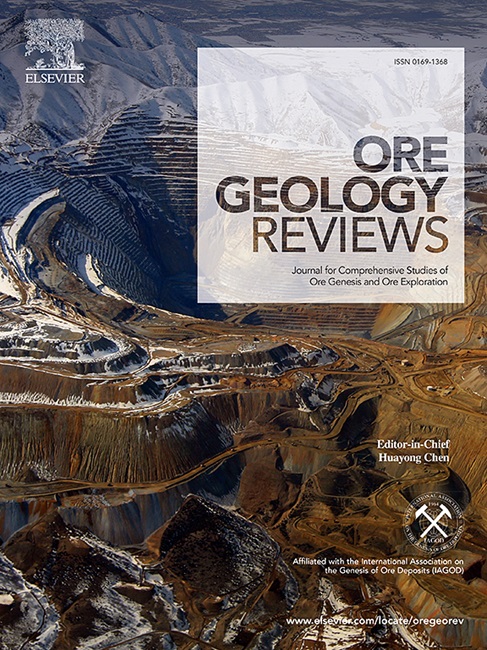Remote sensing identification of hydrothermal alteration minerals in the Duobuza porphyry copper mining area in Tibet using WorldView-3 and GF-5 data: The impact of spatial and spectral resolution
IF 3.2
2区 地球科学
Q1 GEOLOGY
引用次数: 0
Abstract
The identification of hydrothermal alteration minerals using remote sensing technology is an important hot spot in mineral exploration. However, the influence of spatial resolution and spectral resolution on the identification of hydrothermal alteration minerals is an important scientific issue worth studying. Therefore, WorldView-3 data with high spatial resolution and GF-5 data with high spectral resolution were selected to carry out a hydrothermal alteration minerals identification comparative study in the Duobuza porphyry copper mining area in Tibet. Principal component analysis (PCA), spectral angle mapper (SAM) and mixed tuned matched filter (MTMF) methods were employed for WorldView-3 data, while SAM and spectral information divergence (SID) methods were used for GF-5 data. The results of comparative analysis based on field verification data show that: (1) For WorldView-3 data, the accuracy of hydrothermal alteration mineral identification using SAM, PCA, and MTMF methods were 65.18%, 87.38%, and 78.63%, respectively, with the PCA method achieving the highest accuracy; (2) For GF-5 data, the accuracy of hydrothermal alteration mineral identification using SAM and SID methods were 91.38% and 65.18%, respectively, with the SAM method achieving the highest accuracy; (3) The optimal recognition accuracy of hydrothermal alteration minerals in GF-5 data is superior to that in WorldView-3 data, indicating that the high spectral resolution offers greater advantages than the high spatial resolution; (4) Both GF-5 data and WorldView-3 data have advantages in the identification of hydrothermal alteration minerals, GF-5 data can provide richer spectral information to help distinguish minerals with similar spectral characteristics while the higher spatial resolution of WorldView-3 data is helpful to distinguish boundaries. These results demonstrate that GF-5 excels in mineral discrimination, while WorldView-3 is advantageous for spatial mapping. Integrating these datasets in future studies could provide optimal hydrothermal alteration mapping results.

求助全文
约1分钟内获得全文
求助全文
来源期刊

Ore Geology Reviews
地学-地质学
CiteScore
6.50
自引率
27.30%
发文量
546
审稿时长
22.9 weeks
期刊介绍:
Ore Geology Reviews aims to familiarize all earth scientists with recent advances in a number of interconnected disciplines related to the study of, and search for, ore deposits. The reviews range from brief to longer contributions, but the journal preferentially publishes manuscripts that fill the niche between the commonly shorter journal articles and the comprehensive book coverages, and thus has a special appeal to many authors and readers.
 求助内容:
求助内容: 应助结果提醒方式:
应助结果提醒方式:


